Welcome to Washington, D.C., the magnificent capital of the United States! If you are planning to explore this city freely and flexibly, this self-guided Washington DC travel guide is for you. Washington D.C. is not only the political center of the United States but also a treasure trove of culture, history, and impressive architecture, promising unique and memorable travel experiences. Let’s explore every corner of this city and turn your trip into an exciting self-guided Washington DC adventure.
I. Preparing for Your Self-Guided Washington DC Trip
To have a smooth and fulfilling self-guided tour of Washington DC, thorough preparation is essential. Here are the factors you need to consider before starting your journey:
1. Ideal Time to Visit Washington DC
Washington DC experiences four distinct seasons, each with its own beauty. However, the best times for a self-guided tour of Washington DC are spring (March – May) and autumn (September – November).
- Spring: The weather is warm and pleasant, plants sprout and bud, especially cherry blossoms blooming around April, transforming Washington DC into a stunning picture.
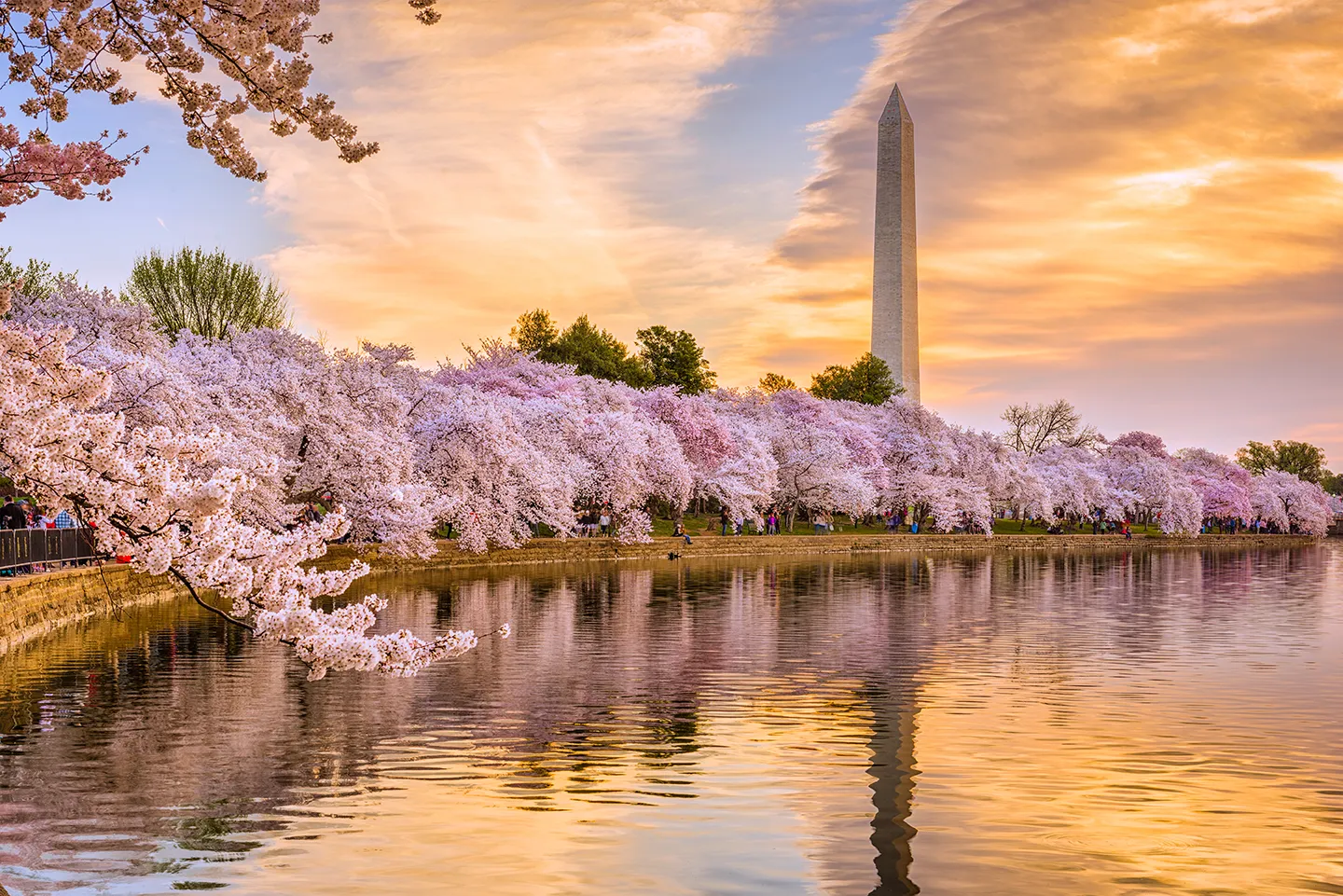
- Autumn: The weather is cool, the sky is clear blue, and the leaves turn golden and red, creating a romantic and charming scene. This is a great time to stroll and explore parks and outdoor memorials.

- Summer (June – August): The weather is quite hot and humid, but this is also the peak tourist season with many outdoor activities and events.
- Winter (December – February): It’s cold, and there may be snowfall, but the festive atmosphere of the year-end and New Year is very special. If you love the Christmas and New Year atmosphere, winter is also an interesting option.
2. Visa and Entry Procedures
To travel to Washington DC independently, you need to apply for a US tourist visa. The visa application process can be quite complex, so you should research carefully and prepare a complete application.
- Visa Type: Apply for a B2 tourist visa.
- Application Documents: Prepare all required documents as requested by the US Embassy/Consulate.
- Interview: Attend the visa interview and answer the consular officer’s questions truthfully.
- Timing: Apply for your visa at least 1-2 months before your trip to ensure it’s ready in time for your schedule.
3. Booking Flights and Accommodation
- Flights: There are no direct flights from Vietnam to Washington DC yet; you will have to transit in cities like Tokyo, Seoul, or Doha. Reputable airlines such as Qatar Airways, Vietnam Airlines, and Japan Airlines usually have flights to Washington DC. To save costs, you should book your flight tickets at least 2-3 months in advance and look out for promotions.
- Accommodation: Washington DC offers many accommodation options, from luxury hotels to budget-friendly guesthouses and hostels. Depending on your budget and preferences, you can choose a suitable area to stay. The central area near the White House and Capitol Hill is convenient for transportation and sightseeing, but prices may be higher. Areas like Georgetown, Adams Morgan, and Dupont Circle are also good choices with many restaurants, bars, and interesting shops.
4. Planning a Detailed Itinerary
A detailed self-guided Washington DC travel itinerary will help you maximize your time and explore many attractions. Here are some suggestions:
- Days 1-2: Explore the National Mall area with famous attractions such as the White House, the Capitol Building, the Lincoln Memorial, the Washington Monument, the National Museum of Natural History, and the National Air and Space Museum.
- Day 3: Visit memorials such as the Jefferson Memorial, the Franklin Delano Roosevelt Memorial, the Vietnam Veterans Memorial, and stroll around the Tidal Basin.
- Day 4: Explore the historic and romantic Georgetown neighborhood, visit Georgetown University, shop, and dine at riverside restaurants and cafes.
- Day 5: Learn about culture and art at museums such as the National Gallery of Art, the Hirshhorn Museum, or explore the vibrant Adams Morgan neighborhood with many international bars and restaurants.
II. Getting Around Washington DC
The public transportation system in Washington DC is very developed and convenient, making it easy to travel between attractions.
- Metro (Subway): The Washington Metro subway system is the fastest and most efficient way to get around the city. The Metro has 6 lines with different colors, covering most important areas.

- Metrobus (Bus): The Metrobus network is extensive, covering many areas not reached by the subway. Buses are a cost-effective option and suitable for exploring suburban areas.
- Bicycle: Washington DC is a bike-friendly city with many dedicated bike lanes and the Capital Bikeshare public bike rental service. Renting a bike is a fun way to explore the city, especially the National Mall area and along the Potomac River.
- Walking: The central area of Washington DC is quite compact and walkable. Walking is a great way to feel the city’s rhythm and discover hidden streets and alleys.
- Taxi and Ride-sharing: Taxis and ride-sharing services like Uber and Lyft are also common in Washington DC. However, the cost can be higher than other public transportation options.
III. Must-See Attractions When Traveling Self-Guided in Washington DC
Washington DC is a city rich in history, culture, and architecture, with countless fascinating attractions. Here are the must-visit destinations on your self-guided Washington DC tour:
1. National Mall Area
The National Mall is the heart of Washington DC, a large national park stretching from the Capitol Building to the Lincoln Memorial. It is home to many iconic architectural landmarks and the most famous museums in the United States.
- White House: The symbol of American power, the residence and workplace of the President of the United States. You can visit the area outside the White House and take souvenir photos. To visit inside, you need to book tickets in advance through the Vietnamese Embassy in the US.
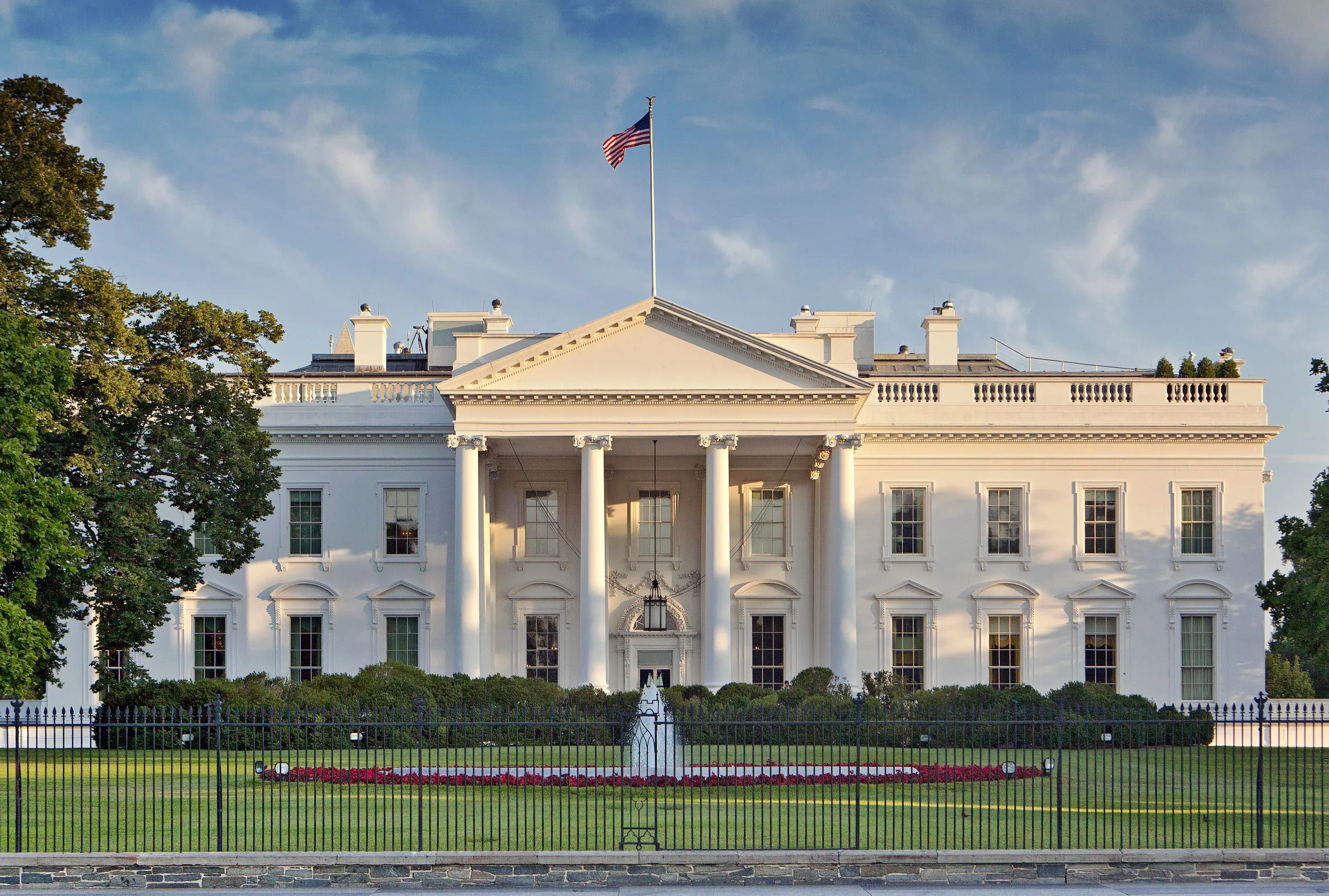
- United States Capitol: The US Congress building with unique and magnificent dome architecture. You can visit inside the Capitol Building and watch Congressional sessions (if scheduled).

- Lincoln Memorial: A monument commemorating President Abraham Lincoln, one of the greatest presidents of the United States. The classical Greek temple architecture and the solemn Lincoln statue create a dignified and moving space.
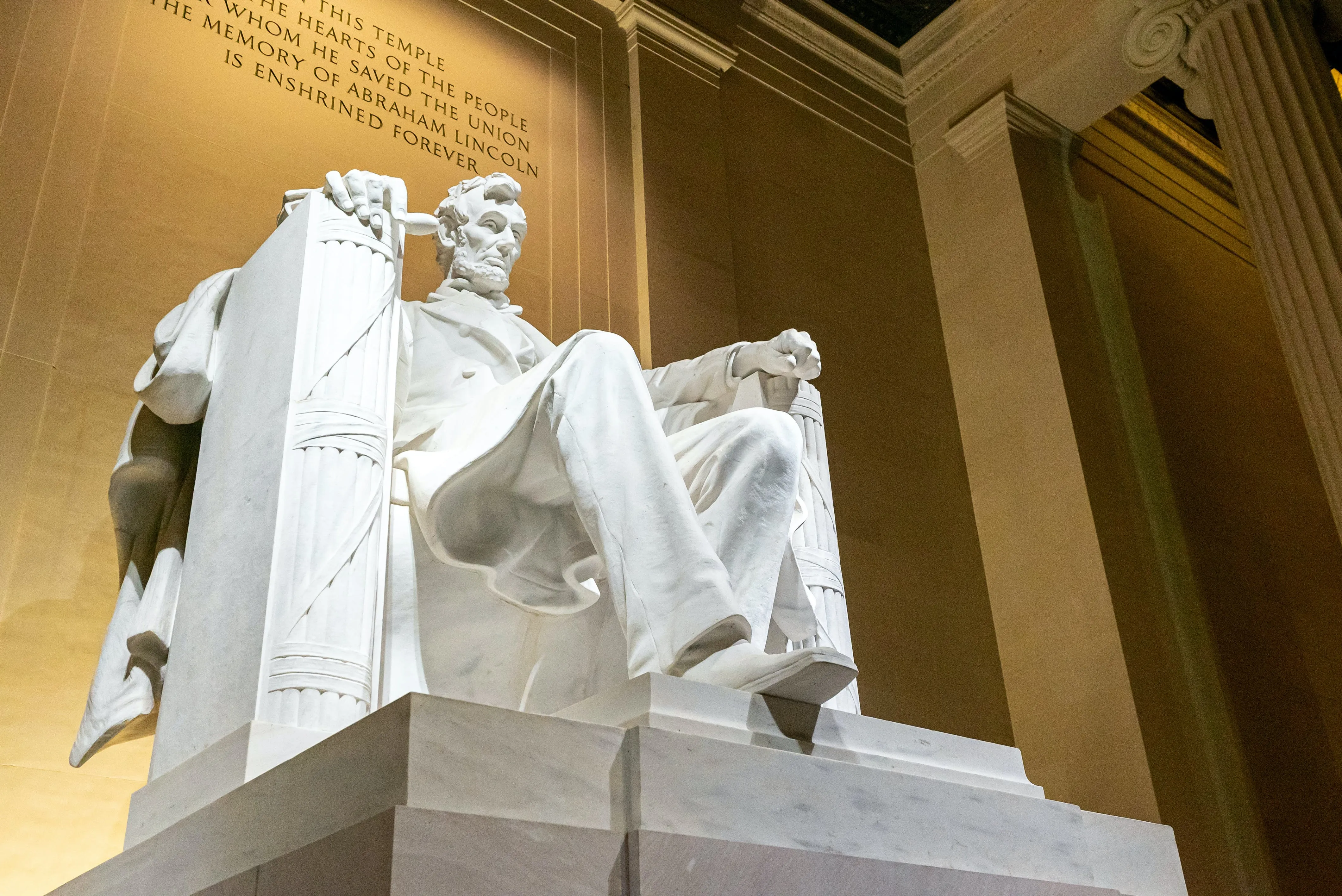
- Washington Monument: A towering obelisk, the symbol of Washington DC. You can go to the top of the monument to admire the panoramic city view (tickets need to be booked in advance).
- National Museum of Natural History: One of the largest natural history museums in the world, displaying millions of artifacts about animals, plants, minerals, fossils, etc. It houses the famous T-rex dinosaur skeleton and the legendary Hope Diamond.
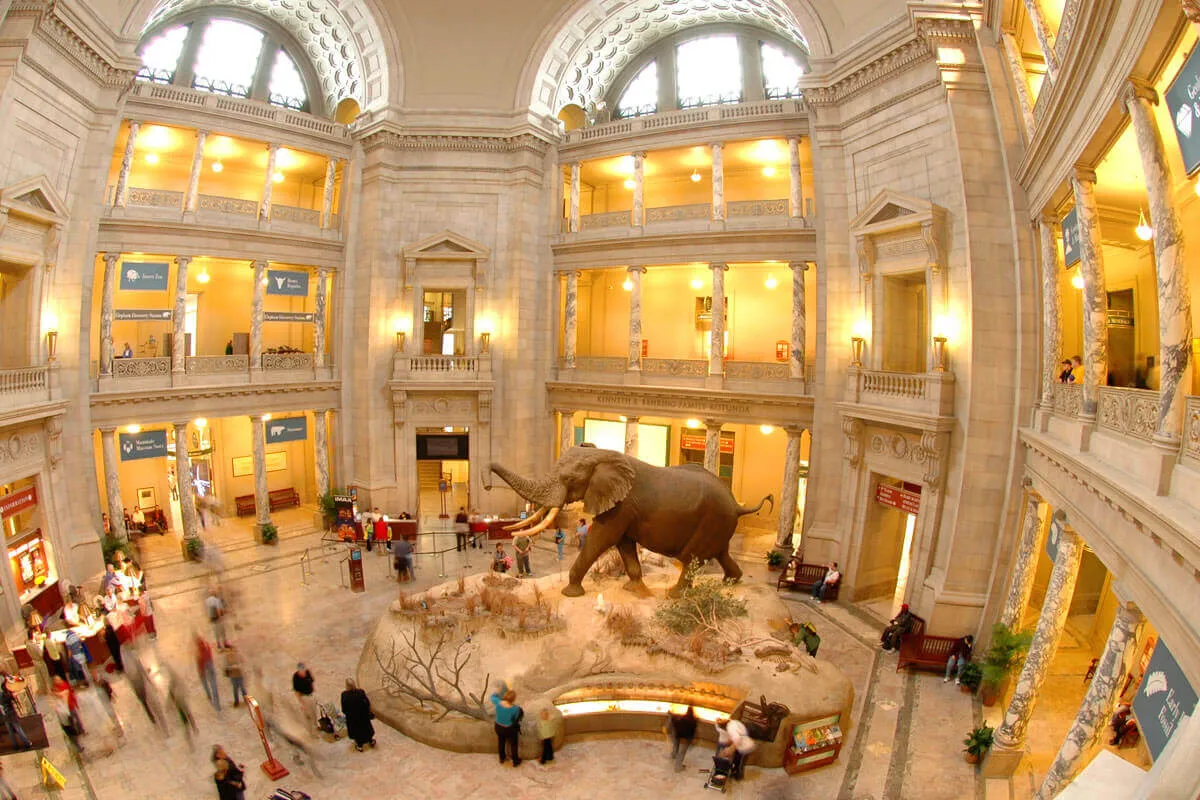
- National Air and Space Museum: A paradise for aviation and space enthusiasts. The museum displays historically significant aircraft, spacecraft, rockets, from the Wright brothers’ first airplane to the Apollo 11 spacecraft that landed humans on the Moon.
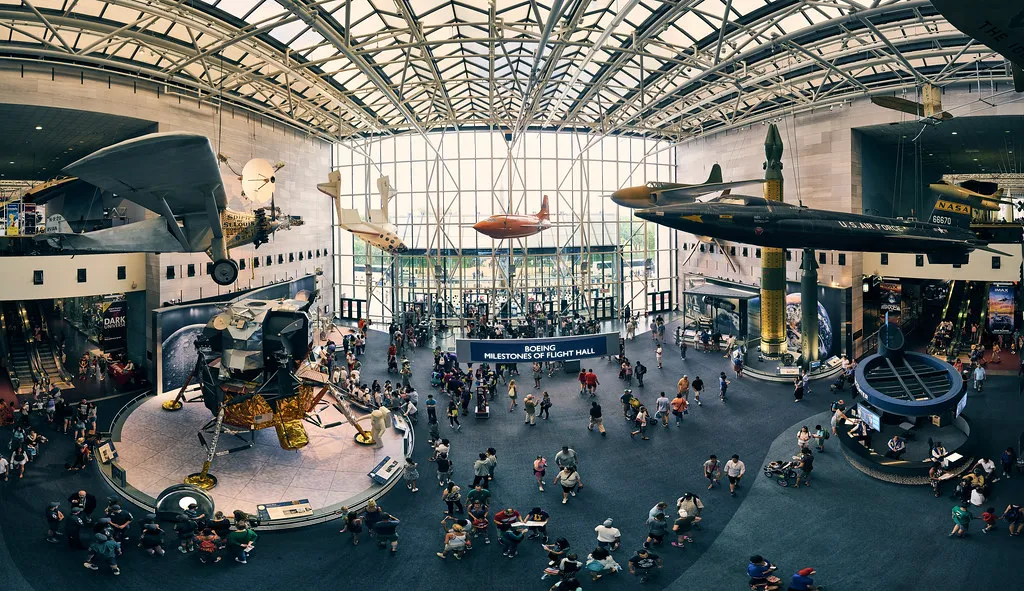
2. Memorial Area
Washington DC has many solemn and meaningful memorials, commemorating historical events and figures who had a great impact on the United States.
- Jefferson Memorial: Commemorating President Thomas Jefferson, the main author of the US Declaration of Independence. The Pantheon-style architecture and the location by the Tidal Basin create a peaceful and dignified setting.

- Franklin Delano Roosevelt Memorial: Commemorating President Franklin D. Roosevelt, who led the United States through the Great Depression and World War II. The spacious memorial features statues, waterfalls, and famous quotes from President Roosevelt.
- Vietnam Veterans Memorial: A black granite wall inscribed with the names of more than 58,000 US military personnel who died in the Vietnam War. A moving and powerful memorial site.
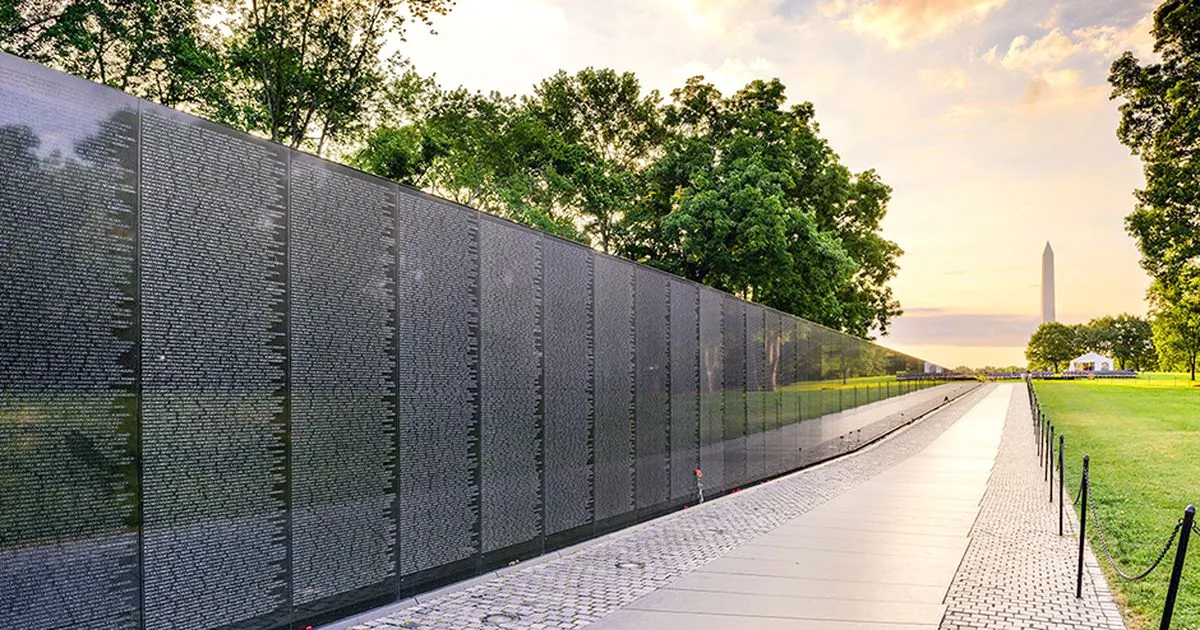
3. Unique Neighborhoods
In addition to historical and memorial landmarks, Washington DC also has many neighborhoods with distinct cultural and stylistic features.
- Georgetown: A historic and upscale neighborhood with cobblestone streets, fine dining restaurants, fashion boutiques, and the prestigious Georgetown University. Georgetown is an ideal place for strolling, shopping, and enjoying cuisine.
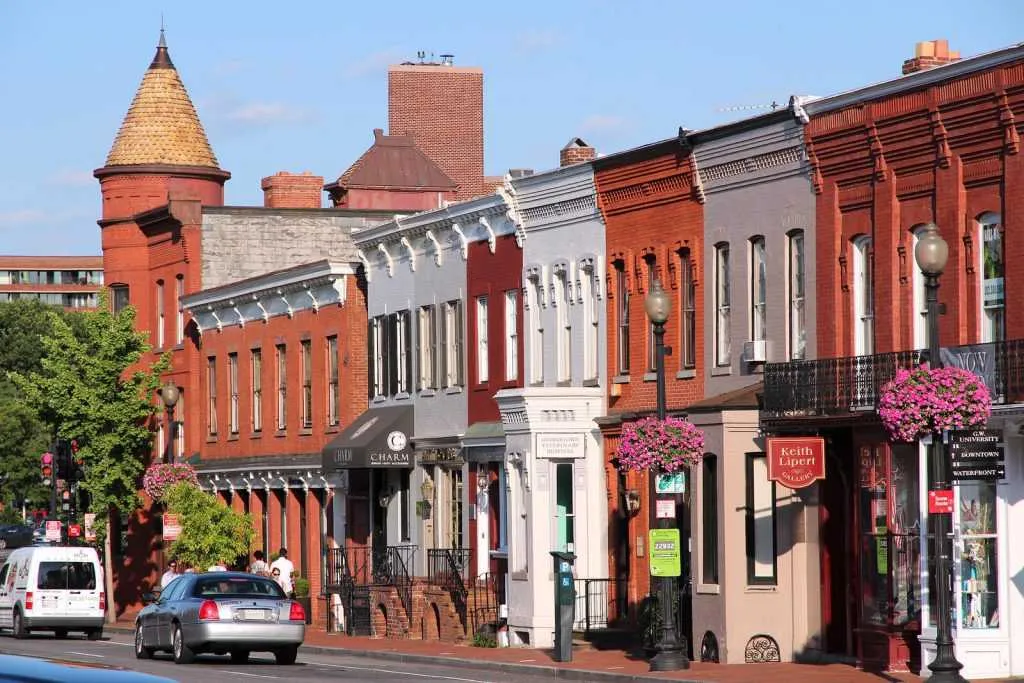
- Adams Morgan: A vibrant and multicultural neighborhood with many restaurants, bars, nightclubs, and shops with international flair, especially Ethiopian culture. Adams Morgan is an attractive destination for those who want to experience Washington DC’s lively nightlife.
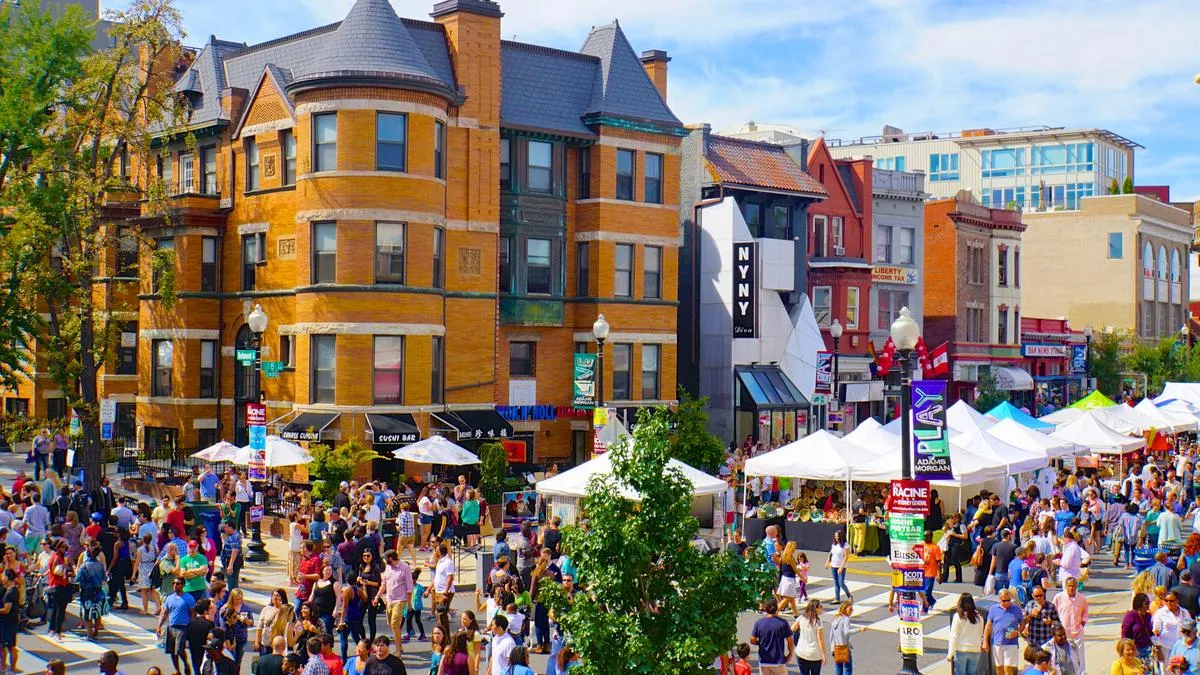
- Dupont Circle: A central cultural and artistic area with many galleries, private museums, independent bookstores, and cozy cafes. Dupont Circle is a gathering place for intellectuals and artists in Washington DC.
- Connecticut Avenue: A luxury shopping avenue with many high-end fashion, jewelry, furniture stores, and elegant restaurants and bars.

4. Washington DC Cuisine
Washington DC cuisine is a blend of many different cultures, from traditional American fare to distinctive international dishes.
- Seafood: Washington DC is famous for its fresh seafood, especially lobster and king crab. You can enjoy seafood at waterfront restaurants or local seafood markets.
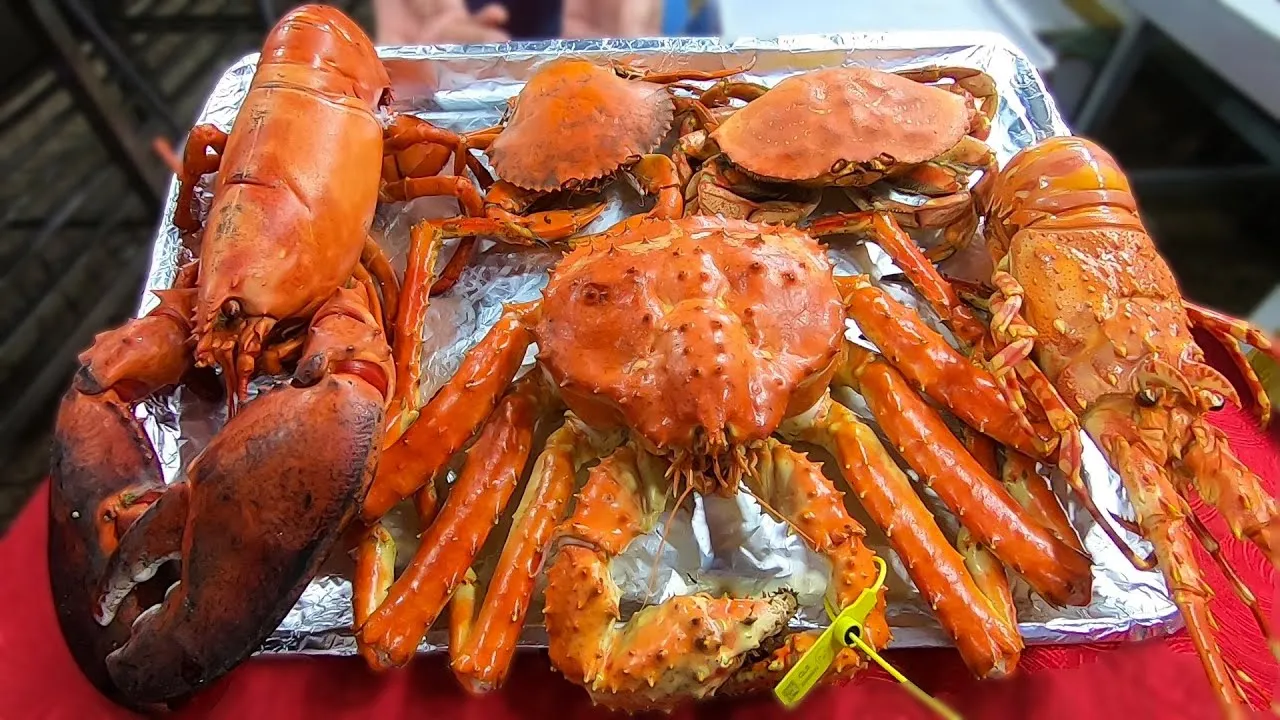
- Empanadas: A pastry originating from Argentina but very popular in Washington DC. Empanadas come with various fillings such as meat, chicken, vegetables, and even sweet versions.

- Cheesesteak: A famous American street food, a long roll filled with thinly sliced beef steak, onions, and melted cheese.
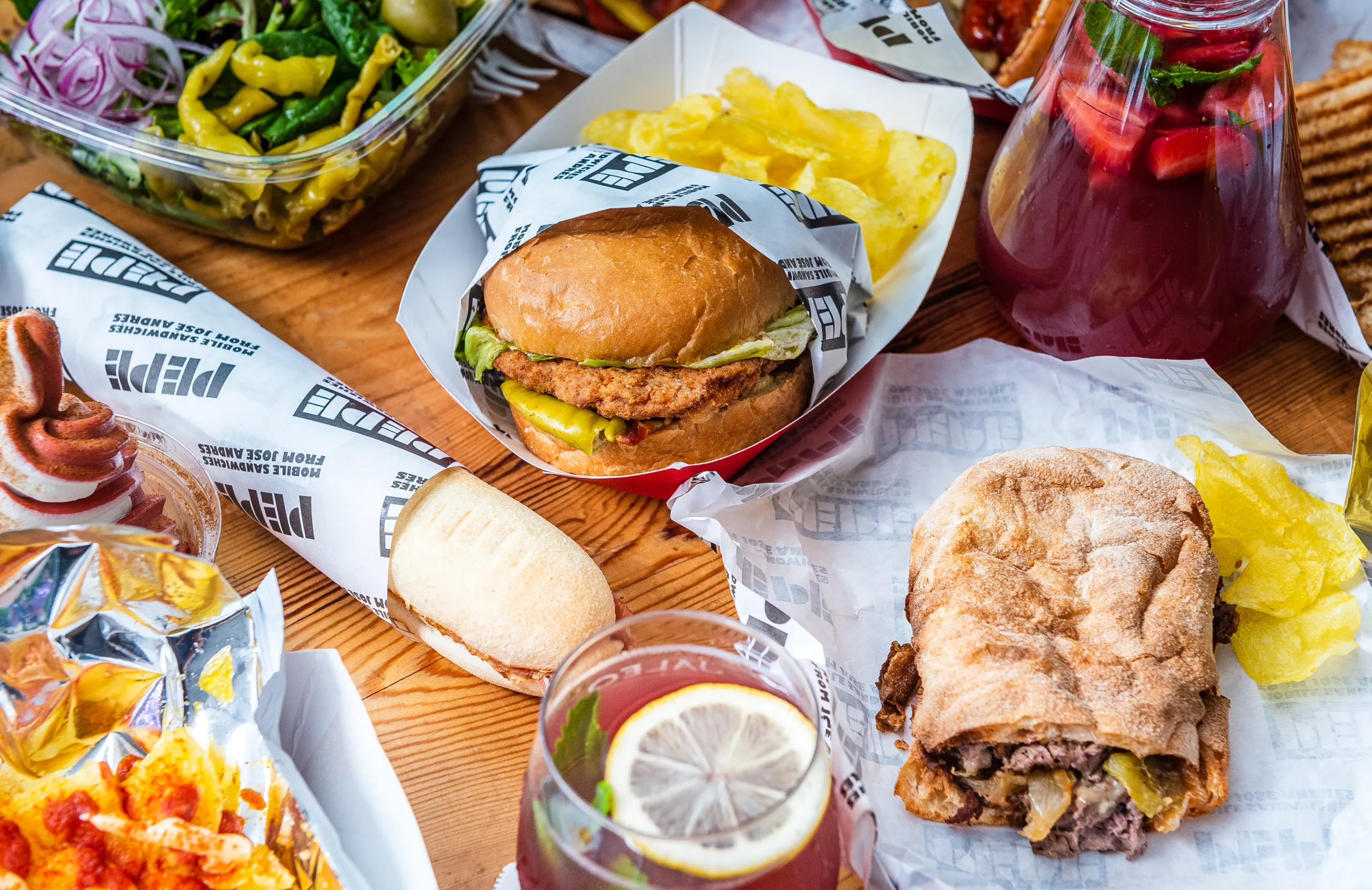
- Beignets: French-style fried doughnuts, soft and fluffy, covered with powdered sugar, usually served with coffee or hot tea.
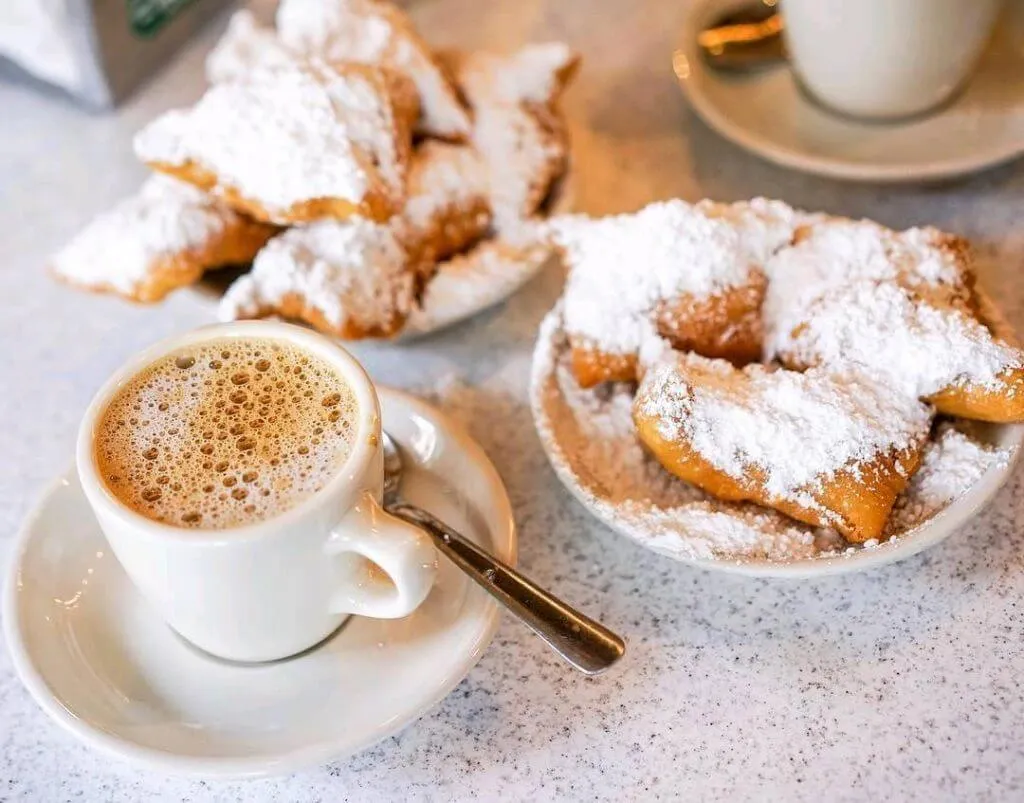
- Honey Glazed Chicken Wings: A familiar dish but with a special flavor in Washington DC. Chicken wings are marinated with rich spices and roasted with fragrant honey.
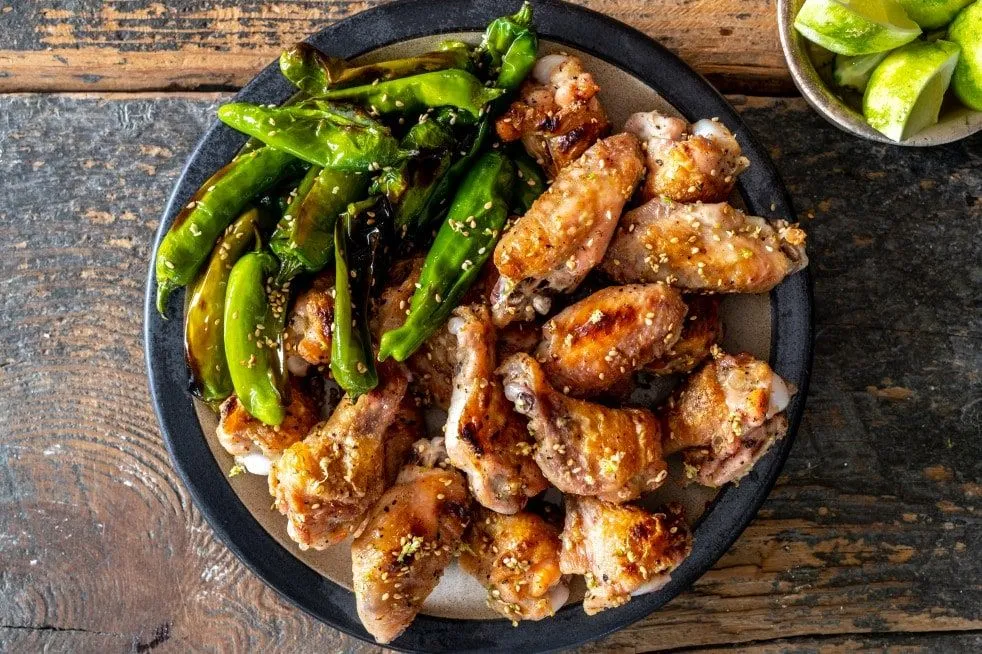
IV. Useful Tips for Self-Guided Washington DC Travel
- Visit Free Museums: Most Smithsonian museums in Washington DC offer free admission. This is a great advantage to help you save on sightseeing costs.
- Use Public Transportation: Washington DC has an excellent public transportation system; you should take advantage of it to travel between attractions economically and conveniently.
- Book Attraction Tickets in Advance: For some popular attractions like the White House and Washington Monument, you should book tickets in advance to avoid queues and ensure admission.
- Wear Comfortable Shoes: You will have to walk quite a lot when exploring Washington DC, so wear comfortable shoes to avoid foot fatigue.
- Learn About Local Culture and Customs: Learning about the culture and customs of Americans in general and Washington DC residents in particular will help you integrate better and avoid unwanted situations.
- Prepare for Weather Changes: The weather in Washington DC can be unpredictable, especially in spring and autumn. Check the weather forecast and prepare appropriate clothing.
Conclusion
A self-guided tour of Washington DC is an exciting and memorable journey of discovery. With thorough preparation and a spirit of free exploration, you will have the opportunity to fully experience the historical beauty, culture, and unique cuisine of the US capital. We hope that with the information and experiences shared in this self-guided Washington DC travel guide article, you will have a successful and memorable trip! Wishing you a wonderful journey of exploring Washington DC!